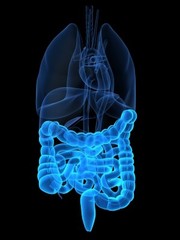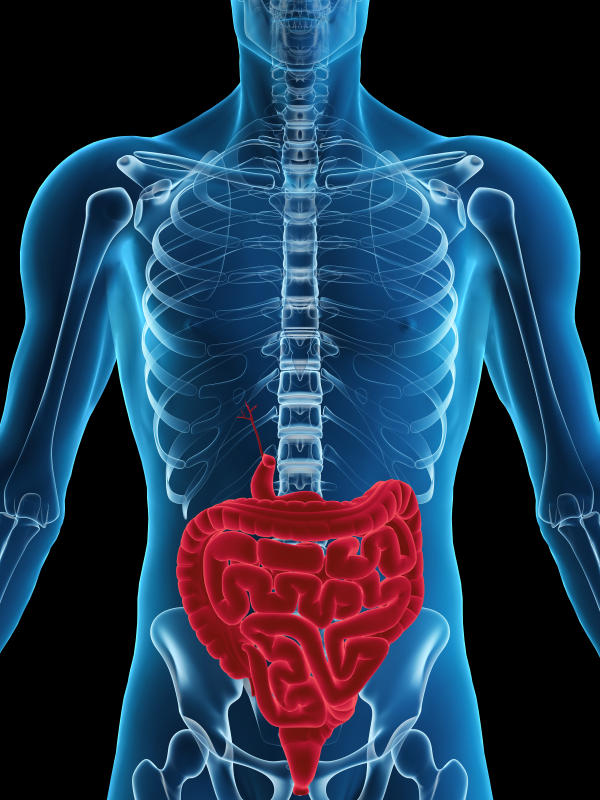Immune Boosting Supplements – Beta Glucan & Colostrum
Here in Auckland, New Zealand we just had the coldest winter in 90 years. It actually snowed slightly in Auckland which has only happened twice in 100 years.
On top of this there were three nasty strains of influenza going around including swine flu. I would say roughly half the people I know had the flu this year and because of the weather it was particularly hard to shake.
Not having had the flu for a few years and without a vaccination, with my intense strength/endurance training of late, I was vulnerable to getting the virus.
I got the flu three times this winter. It kicked my ass. In all I spent an entire month sick as hell in bed. While outside it rained and froze. Now that really sucked and wasted much time.
The probiotics I was taking did not help and in fact probably contributed to the dreadful diarrhea I had with the final flu bout. I was taking lifestream probiotics which have a variety of bacterial strains.
Some of the probiotic strains do not mix well with cold and flu while others are helpful. After this experience I have decided not to use probiotics ever again.
It was bad trust me.
OK so what I needed as I kept falling ill and not shaking the virus off fully was an immune boost. Here in New Zealand Bovine Colostrum is in ample supply so I got some and there was an immediate improvement in my health.
Now I am also taking Beta Glucan to further strengthen my immunity. I got 500 gms from purebulk.com. Enough to last several years on a 100 mg dose. But it expires 2014 so I will just use it all by then.
Now both of these substances are proven to greatly enhance immunity. Beta Glucan can even protect from cancer and radiation poisoning. I made a previous post about barley beta glucan but my present batch is derived from yeast.
I will keep you guys posted as to the effectiveness and as I ramp up my weight vest and kettlebell training in the coming weeks.
I am now snatching 200 reps with a 20 KG kettlebell having managed 500 with the 16 KG.
I also bought a 140 lb weight vest from MIR and will get some steel for that soon I will get a set of their weighted shorts too which will take it close to 200 lbs.
In short with this kind of training your immunity takes a big hit without adequate nutrition and supplementation
Probiotics produce neurotransmitters
I’m sure you have heard of smart drugs and nutrients that improve brain function by altering neurotransmitter levels in your brain.
Well two new research papers reveal that probiotic bacteria in your gut can do the same thing naturally.
This is fantastic news because the main flaw with smart drugs is balancing the dose. If its being done in your gut by the food you eat your body can take care of balancing neurochemicals naturally.
This video is not on the latest research which you can read about below.
From Kurzweilai.net blog:
Professor Mark Lyte and associates at Texas Tech University Health Sciences Center have come up with a radical concept: that you may be able to fine-tune your mental and emotional states by the right combination of probiotics!
Probiotics are “good” bacteria that normally reside in your gut and are available OTC in any drug store or health food store. Lyte suggests that they can generate neurochemicals that affect your brain — even improve your psychological health, and that neurochemicals generated by the brain can also affect these bacteria.
We recently reported on evidence that gut microbes do in fact influence neurological function (along with aiding digestion and inhibiting pathogens). But Lyte and associates take it a step further.

“This paper proposes a new field of microbial endocrinology, where microbiology meets neuroscience,” Lyte said. “There is already evidence to suggest that the connection between gut microbes and the nervous system represents a viable route for influencing neurological function. A recent study in mice, for example, showed that the presence of neurochemicals such a serotonin in the bloodstream was due to direct uptake from the gut.”
“Neurochemicals such as GABA may be viewed as a common shared language enabling interkingdom signaling between prokaryotes (e.g., probiotic bacteria) and eukaryotes (e.g., vertebrates),” Lyte said in a BioEssays paper. For example, lactobacilli and bifidobacteria produce GABA, which is known to reduce stress and anxiety (GABA may also reduce inflammation in colitis and intestinal bowel disease), he said.

“GABA is already potentially present in some fermented foods,” Gregor Reid of the Department of Microbiology and Immunology, University of Western Ontario points out. “So should there not be some clinical evidence available already to suggest that eating these foods improves mental health?…. Lactobacillus acidophilus NCFM induce opioid effects, yet there is no evidence that pain relief is associated with ingestion of this organism in any probiotic formulation. This may be because nobody has investigated this formally, or the levels of the molecules necessary are too low.”
In the paper, Lyle lists several neurochemicals (normally produced by the brain) that are also produced by various probiotics in the gut:
Lactobacillus, Bifidobacterium GABA
Escherichia, Bacillus, Saccharomyces Norepinephrine
Candida, Streptococcus, Escherichia, Enterococcus Serotonin
Bacillus, Serratia Dopamine
Lactobacillus Acetylcholine
If Lyte’s hypothesis is confirmed, microbial endocrinology may emerge as an exciting new approach to treating patients with psychological problems.

So do physical gastrointestinal problems have psychological counterparts? (Gives new meaning to “gut feeling.”) Also, what is the role of the “second brain” (neurons embedded in the walls of the long tube of our gut, or alimentary canal, contains some 100 million neurons) in this?
And will we see a new class of “psychohackers” experimenting with creating their own treatments and modifying their own neurochemicals to reduce depression and anxiety or induce happiness?
Ref.: M. Lyte, Probiotics function mechanistically as delivery vehicles for neuroactive compounds: Microbial Endocrinology in the design and use of probiotics, BioEssays, 2011; [DOI: 10.1002/bies.201100024]
Ref.: G. Reid, Neuroactive probiotics, BioEssays, 2011; [DOI: 10.1002/bies.201100074]
(GABA) is already potentially present in some fermented foods, should there not be some clinical evidence available already to suggest that eating these foods improves mental health?
Experiments with mice have determined that behavior and brain chemistry varies depending on the type of bacteria in the gut, report Stephen Collins at McMaster University and Premysl Bercik at the Farncombe Family Digestive Health Research Institute.
Working with healthy adult mice, the researchers showed that disrupting the normal bacterial content of the gut with antibiotics produced changes in behavior; the mice became either anxious or less cautious. This change was accompanied by an increase in brain-derived neurotrophic factor (BDNF), which has been linked to depression and anxiety.
When oral antibiotics were discontinued, bacteria in the gut returned to normal, “accompanied by restoration of normal behavior and brain chemistry,” Collins said.

The findings are important because several common types of gastrointestinal disease, including irritable bowel syndrome, are frequently associated with anxiety or depression. In addition there has been speculation that some psychiatric disorders, such as late onset autism, may be associated with an abnormal bacterial content in the gut.
Bercik suggested that these results lay the foundation for investigating the therapeutic potential of probiotic bacteria and their products in the treatment of behavioral disorders, particularly those associated with gastrointestinal conditions such as irritable bowel syndrome.
The research appears in the online edition of the journal Gastroenterology.
Gut bacteria and stress
Another recent study with mice has also demonstrated a connection between gut bacteria in the digestive system and stress response.
Researchers at Ohio State University showed that gut bacterial colonies in mice decrease and immune biomarkers increase in response to stress. They ran a series of experiments using an aggressive mouse as a stressor for docile mice.
At the end of the stress experiments, blood samples and material from inside each animal’s intestine were taken from stressed animals along with samples from a control group. The blood samples were analyzed to detect the levels of two immune biomarkers used to gauge stress: a cell-signalling cytokine molecule and a protein called MCP-1 that summons macrophages, or scavenger cells, to the site of an infection.
The intestinal samples were used to determine the relative proportion of at least 30 types of bacteria residing there.
Compared to the control mice, the stressed animals showed two marked differences: the proportion of one important type of bacteria in the gut (Bacteroides) fell by 20 to 25 percent while another type (Clostridium) increased a similar amount. Also, levels of the two biomarkers jumped 10-fold in the stressed mice, compared to controls.
The researchers concluded that exposure to social stressors “significantly affect gut bacterial populations” while increasing circulating cytokines that regulate inflammatory responses.
Ref.: Bailey MT et al., Exposure to a social stressor alters the structure of the intestinal microbiota: implications for stressor-induced immunomodulation, Brain, Behavior, and Immunity, 2011
Kaatsu Occlusion Training
Having worked out 26 years I get excited when I discover something I missed out or didn’t come across before. It doesn’t happen that often but it did this week when I came across Kaatsu training.
I discovered it in the X-Reps books on body building and went on to discover this method has been used in Japan for 40 years and extensively researched and documented.
Kaatsu training involves using cuffs or bands to decrease blood flow to the muscle being trained – similar to a blood pressure cuff but simple wraps will do. Care must be taken not to over do it with the cuffs.
The technique is widely supported by a large number of scientific papers but is largely unknown outside of Japan.
Here is a video by a top natural body builder describing the benefits of Kaatsu.
These dudes run for Hundreds of miles non stop
Just watch the two videos and your attitude to running may change.
Middle Age Sucks
Man I love sports – weight lifting – I used to be an infantry soldier 10 years ago.
7 years back I tested for re-entry and passed with flying colors at 35. So a couple of years back at 40 I tried again expecting to ace it as I am actually much stronger now. I failed dismally on both the medical and fitness. Turned out I had Iron overload and ended up having venesections to clean it out of my body.
So I cant run any more as I am too big but I am still fit and very strong – men increase in strength into senior years if they keep training but lung capacity and cardio usually decline.
Then there is the belly fat.
Then there are all those little injuries that add up and take longer to heal.
Basically middle age has a few advantages and many disadvantages. Hormonal decline is like drinking poison everyday. Without those elevated hormone levels your body decays a little every moment. And then there are the telomeres.
So many therapies are in the very near horizon such as myostatin, telomerase, already you can improve your hormonal profile very beneficially.
Middle aged people still want to be athletes and soldiers – I do. They still want to sprint like they were 20 years old.
Its a huge huge market. Aging sucks, I hate it. I don’t want to get old and die a sick miserable death.
Hormonal therapies exist now and could easily be smartified – such as smart implants that regulate hormone levels.
What we want now are myostatin and telomerase therapies to complement more advanced hormone therapy.
As for the mind – neurofeedback and hypnosis can take you a very long way when applied correctly with the proper vision and skill.
Using Sledge Hammers Like Indian Clubs
How much is a pair of heavy indian clubs ? $50-$150 bucks is my guess. But you can get the exact same workout with heavy hammers for a fraction of the price – why waste your cash?
This is the way to strengthen your wrists for sure. My new grip book publishing soon has a section on hammer training for wrist strength.
Crazy Grip Training Videos
OK I made a couple of cheesey videos on my grip training.
First one is a montage from a 30 minute workout with some catchy keygen music added.
Please don’t be frightened.
Nail bending
Apart from heavy kettlebell swings there is another exercise that will give you a killer grip – its nail bending.
Once you find six inch hardware nails easy you can progress by snipping an inch off them with bolt cutters. The move on to bolts, screw drivers door hinge pins etc.
Admittedly I am new to the sport and have only bent a dozen nails so far. But they have all bent fully. I also have a “power twister” which the packaging says is 60KG torsion. A six inch hardware nail takes 280 – 350 lbs of force to bend but the power twister is much harder than a nail. I would say it takes 400 lbs of force (compared to the nails) so I don’t know where they get the 60KG from but its definitely much more.
Here I am bending a six inch nail.
Now my tendons are still getting broken in and boy – this really hurts like heck afterward. the first session it hurt all the next day – now I find it hurts for an hour or two after.
Ultimate Kettlebell Grip Exercise
Yep its gotta be the simplest kettlebell exercise of them all – The Swing !!!
But not just any swing. What you need to do is get a kettlebell thats way beyond your strength level in most exercises. So if you normally do your presses and cleans with a 20KG or 24KG, use a 40KG for the heavy swings.
You will need to have developed your motor skill set with kettlebells before using heavy weights and remember to use tension throughout to stabilize the move.
Do high swings with one arm and you will feel it in your grip and forearms immediately. Much better than barbell curls.
Good Luck.
Climb a mountain in your weight vest !!!
Reckon you could climb a mountain in a weight vest. It sounds impossible – right?
A mountain is big. This is New Zealand’s biggest mountain…
Mt Cook is 12,316 ft. Its very beautiful but I’m damned if I want to climb it in a weight vest. I found some concrete steps in a park about a minutes walk from my place.

Its 60 or so steps to this level…

Then another 50 plus into the shopping mall above…

Over 110 steps so that must be at least 40 feet.
12,316 ft divided by 40 = 307
If I can climb these steps 307 times in my weight vest I have climbed the equivalent of a mountain.
Today I did it six times and nearly blew my ass – I have a 40 lb vest and will try adding one more climb each day I do it. It is one “hell” of a cardio workout and not too bad for the thighs either.
